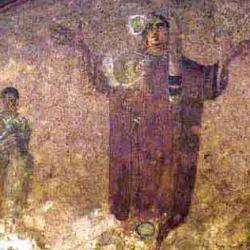A recurring theme of medieval treatments of beauty, writes Umberto Eco (Art and Beauty in the Midlde Ages), is “the beauty of being in general. It was a period in whose history darkness and contradiction may be found, but its philosophers and theologians had an image of the universe that was filled with light and optimism” (17).
That image arose from their belief in creation. Though it had classical sources as well, it was a biblically-formed aesthetic: “As Genesis taught, ‘God saw all that he had made, and found it very good . . . . Thus heaven and earth and all the furniture of them were completed.’ And the Book of Wisdom taught also that God created the world according to number, weight, and measure. . . . these concepts were taken to be aesthetic as well as cosmological, and also as expressions of the Good, the metaphysical Bonum. It was the Scriptures, then, extended and amplified by the Fathers, which produced this pancalistic vision of the cosmos” (17).
The categories of Wisdom were especially important for scholastic aesthetic theory: “Quite a number of concepts were constructed in order to give philosophical expression to this aesthetic vision of the universe. But they all derived ultimately from the triad of terms given in the Book of Wisdom: number (numerus), weight (pondus), and measure (mensura). Thus we find triads such as dimension, form, and order (modus, forma, ordo); substance, nature, and power (substantia, species, virtus); that which determines, that which proportions, and that which distinguishes (quod constat, quod congruit, quod discernit); and so on and so forth” (19).











